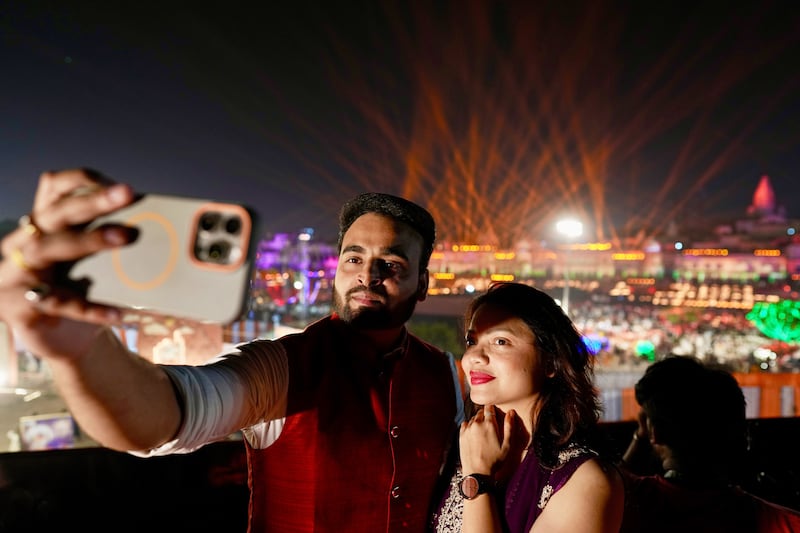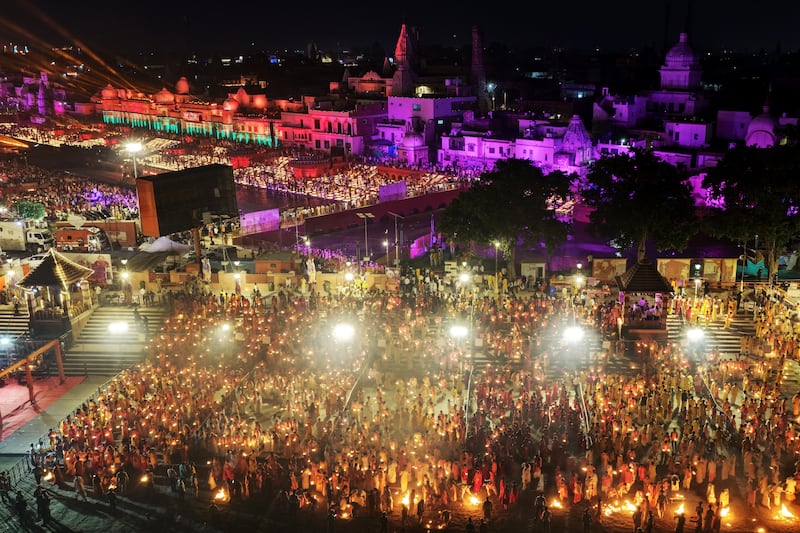Diwali is now an official holiday in three states: California, Connecticut and Pennsylvania.
Gov. Gavin Newsom signed into law a bill earlier in October that authorizes public schools and community colleges to close on Diwali as well as allows state employees and public school students to take the day off. This law will go into effect on Jan. 1.
On Monday, he posted this message on X: “Happy Diwali, California.”
“Today we celebrate the Festival of Lights — the spiritual victory of light over darkness, good over evil and knowledge over ignorance,” he wrote.
His state is home to roughly 960,000 Indian Americans. That’s about 20% of all Indian Americans in the U.S. Other hubs for this diaspora include Texas, New Jersey, New York and Illinois.
This festival is gaining more popularity in the West. As Tilak Parekh, a researcher at the University of Cambridge, told The New York Times, “It’s a rare time that non-Hindus engage with the Hindu faith.”
This year, high-level Indian Americans in federal and state governments wished Americans a happy Diwali.
What is the legend behind Diwali?
The word Diwali means “a row of lights” in Sanskrit.
I’ve previously written about celebrating this holiday in New Delhi, where I grew up, and learning about the story behind it from my grandmother.
It went something like this: Lord Rama, an incarnation of Lord Vishnu, the god of protection, returned to Ayodhya after 14 years of exile and the defeat of Ravana, a 10-headed king of demons.
The evil king had abducted Rama’s wife Sita, but on Diwali, Rama, Sita, Lakshmana, who is Rama’s brother, and Hanuman, a monkey man who is “a symbol of strength and energy,” came back home, according to the BBC.

Meanwhile, in south India, the defeat of the demon Narakasura at the hands of Lord Krishna is celebrated.
In the western parts of the country, the festival marks the day that Lord Vishnu chose King Bali, a demon, to rule the netherworld, according to National Geographic.
The true story of Diwali changes with geographies and historical events. Minority religions have their own Diwali legends — whether it’s Sikhs celebrating the 7th-century Guru Hargobind’s release after imprisonment or Buddhists remembering the day as when Hindu Emperor Ashoka converted to the faith.
And of course, there is the romantic story of the Goddess Lakshmi choosing Lord Vishnu to be her husband on this night.
Although it’s unclear what the real origin story is, it’s safe to say that the festival is widely believed to mark the victory of light over darkness. It’s worth noting that Diwali also marks the new year, as it coincides with harvest season.
White House wishes a happy Diwali amid tensions with India
The White House published a message from President Trump, sending his wishes for those celebrating Diwali.
“For many Americans, Diwali is a timeless reminder of light’s victory over darkness,” said Trump.
“It is also a time to bring families and friends together to celebrate community, draw strength from hope, and embrace a lasting spirit of renewal,” the message continued. “As millions of citizens light diyas and lanterns, we rejoice in the eternal truth that good will always triumph over evil. To every American celebrating Diwali, may this observance bring abiding serenity, prosperity, hope and peace.”
This message comes amid tough negotiations between the Trump administration and India over New Delhi’s import of Russian oil. Trump told reporters on Air Force One that Prime Minister Narendra Modi made promises to no longer buy oil from Russia. But Indian officials have no record of such a conversation. To this, Trump said, “But if they want to say that, then they’ll just continue to pay massive tariffs, and they don’t want to do that.”
Aside from paying 50% in tariffs to the U.S., India is also unhappy about the Trump White House’s policies that plan to impose a $100,000 fee on work visas, severing a pathway for Indian workers.
U.S. politicians celebrate Diwali
National Intelligence Director Tulsi Gabbard, a former presidential candidate and congresswoman, and FBI Director Kash Patel also offered a message on the auspicious day for Hindus.
Gabbard in a post said, “May the light of God’s love guide our path, remove the shadows of doubt and inspire us to reflect His love in all that we do.”
Republican leader and Ohio gubernatorial candidate Vivek Ramaswamy and Texas Gov Greg Abbott also wished folks a happy Diwali.
Considering celebrating Diwali this year? Here’s what you need to know
The festivities don’t start and end with Diwali day. People gather on Diwali day and in the weeks leading up to it to exchange gifts, play card games and indulge in food.
“In particular, it is common to see Besan Ladoos given out — these are made out of chickpea, ghee, palm sugar and cardamom,” Shereen Bhalla, director of education at the Hindu American Foundation, told Good Housekeeping, adding that traditions may vary depending on the region.
On the day of Diwali, devotees offer prayers to their gods. In my home, this begins with the Gayatri Mantra, a sacred chant that acknowledges the creation of all things.
People end the night by lighting diyas, or small oil lamps and firecrackers. It’s worth noting that India’s Supreme Court banned traditional firecrackers but allowed “green” firecrackers. But the air quality index still hit dangerous levels of 345 this year.


